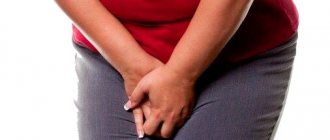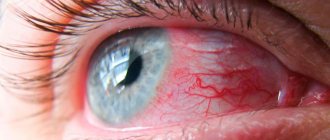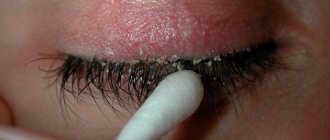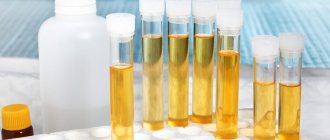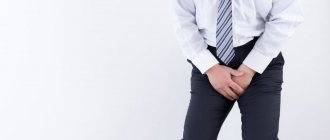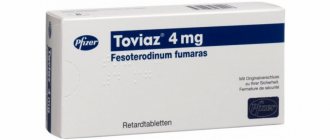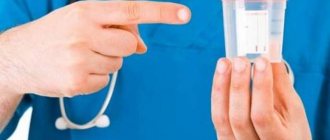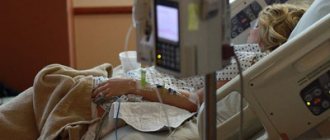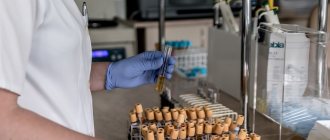Enuresis is usually called urinary incontinence during sleep - nighttime and daytime. This unpleasant disease is diagnosed in children and adults at any age, but adolescents under 15 years of age (up to 3%) and older people are especially susceptible to it.
Cost of urologist services in our clinic
| Initial consultation with a doctor with the highest category | 1000 rub. |
| Consultative appointment with a doctor based on test results and ultrasound results | 500 rub. |
| Ultrasound of the kidneys in standard mode and using Doppler techniques | 1200 rub. |
| Ultrasound of the bladder | 500 rub. |
| Ultrasound of the pelvis using Doppler techniques | 1200 rub. |
| Make an appointment by phone: 8-800-707-15-60 (toll-free) | |
| *The clinic is licensed to remove tumors |
Urologists say that nocturnal enuresis (NE) is curable in many cases, the main thing is to find the cause of the pathology. Therefore, do not hide the problem from doctors - make an appointment with a urologist and undergo an examination.
Why do people pee: the brain argues with the kidneys
The content of the article
The causes of urinary incontinence are well known: enuresis is caused by pathologies of the central nervous system, incoordination of the bladder and brain, nocturnal polyuria (increased urine production) associated with hormonal abnormalities, and kidney disease.
Hormonal causes of enuresis were previously practically not considered, but it is now known that hormone imbalance is the cause of almost half of the cases of the disease. Moreover, the failure can occur at any level - in the pituitary gland, thyroid gland or respiratory organs.
Thus, apnea (respiratory arrest due to adenoids, snoring, obstructive bronchitis, etc.) leads to insufficient oxygen supply to the brain (hypoxia), which in turn leads to a lack of production of vasopressin (ADH), a hormone responsible for the proper functioning of the kidneys.
The less ADH is secreted, the more urine is produced: some patients can accumulate up to 20 liters per night! No bladder can hold such an amount.
In addition, the lack of certain sex hormones leads to weakening of internal muscles, in other words, to their aging. The organs sag and put pressure on the bladder, reducing its volume. This phenomenon is often observed in women during menopause. It has been established that women suffer from enuresis three times more than men.
Scientists say that most patients with enuresis have genetic prerequisites for this. A gene responsible for the development of NE has been discovered. Another cause of enuresis is sleep disturbances, when the patient sleeps “like dead” and does not feel the urge.
Symptoms of urinary incontinence
Pathology can manifest itself as follows:
- involuntary release of a small amount during exercise or coughing, without the urge to urinate, pain or discomfort;
- the release of a small amount of urine, which is preceded by frequent urges;
- leakage after urination;
- complete uncontrolled emptying of the bladder.
If such symptoms appear, you should contact a urologist for detailed diagnosis and medical help. This may be a sign of another disease.
Why you need to treat nocturnal enuresis
There is not a single person who would like to sleep in diapers or wake up in a puddle of urine. A constant smell, wet underwear and judgmental glances from even the closest people are the eternal companions of people with NE.
Patients with nocturnal enuresis cannot live a normal life: travel is excluded for them, and they have to sleep alone. This is oppressive, an inferiority complex develops, and the psyche is destroyed.
As for health, enuresis is often only a symptom of a disease that requires mandatory treatment, especially when it comes to the kidneys or hormonal imbalance.
Complications of untreated urinary incontinence in men
Depending on the causes of incontinence, complications such as:
- impotence;
- hydronephrosis - stretching of kidney tissue by accumulated urine due to a violation of its outflow;
- renal failure.
In addition, do not forget about psychological health. The problem negatively affects the patient’s emotional state, his ability to work, and his personal life. Therefore, among the possible complications, the first place is taken by the deterioration of the quality of life.
How is nocturnal enuresis treated?
There is no magic pill that could be prescribed to every patient with NE, because the treatment method completely depends on the cause of the pathology. The doctor first sends you for tests (urine, blood) and diagnostics - ultrasound of the bladder and kidneys, x-rays. Then, having received the results, he draws conclusions. Sometimes the data obtained is not enough, then additional research will have to be done.
Treatment of enuresis can be conservative and surgical. If the cause can be eliminated without surgery, then enuresis is treated with medications and psychotherapy, otherwise surgical intervention is required. The help of a psychotherapist is often required even after treatment: many patients have difficulty getting used to life “without diapers.”
Drug treatment can include various drugs: hormonal problems are eliminated with hormone therapy, infections are usually treated with antibiotics. There are medications that reduce urine production at night and restore sensitivity to the nerves of the bladder.
As for operations, there are now many methods that correct pathologies of the urinary system, including low-traumatic ones. Such interventions are carried out through punctures in the abdominal cavity or natural access (urethra), so after them everything quickly heals and is forgotten.
Patient examination methods
Enuresis is a separate syndrome that occurs in a variety of diseases. Therefore, diagnosis begins with a thorough examination and history taking . At the first stage of the examination, the patient is asked to keep a special diary, where he must indicate the frequency of urination, the approximate volume of urine, and the number of urges to urinate.
You also need to do:
- clinical and bacteriological analysis of urine (pay attention to laboratory signs of the inflammatory process - the presence of leukocytes, erythrocytes, bacteria);
- blood test to determine serum iron and sugar levels;
- Ultrasound of the kidneys, prostate;
- catheterization of the bladder with determination of the volume of residual urine;
- cystourethrography;
- excretory urography;
- MR urethrography;
- urodynamic tests.
Are there pills for enuresis?
Urologists are often asked what medications should be taken for nocturnal enuresis in adults. This question can only be answered by knowing exactly the cause of the disease:
- A drug that contains antidiuretic hormone and reduces nighttime urine production may be prescribed.
- For neurotic enuresis, sedatives and mild antidepressants are prescribed.
- There is a method that involves taking combination drugs containing ephedrine. These powerful medications are available by prescription.
But it is not possible to cure enuresis with dietary supplements, since they do not contain real drugs.
Causes of urinary incontinence in men
Factors that may cause the disease:
- changes in the pelvic floor muscles;
- inflammation of the prostate gland – prostatitis, prostate adenoma;
- cystitis, pyelonephritis;
- previous surgical interventions on the pelvic organs;
- neurological diseases (multiple sclerosis, Parkinson's disease);
- suffered a stroke;
- brain injuries, spinal cord injuries;
- pathologies of the lumbar and sacral spine;
- bladder tumors;
- urolithiasis disease;
- sexually transmitted infections;
- overweight, obesity;
- stress, neurosis.
Determining the cause of this condition is very important, since the treatment program depends on it.
Prevention measures
Manifestations of bedwetting reduce male self-esteem and negatively affect public and personal life. To prevent the occurrence or recurrence of enuresis, it is recommended to adhere to the following rules:
- give up bad habits (smoking, drinking alcohol);
- maintain optimal water balance in the body;
- eliminate physical inactivity, move more;
- enrich the menu with vegetables, fruits and cereals;
- avoid junk food (both in composition and method of preparation);
- normalize sleep and activity patterns.
Most men are in no hurry to see a doctor and are embarrassed by the problem that has arisen. If you ignore the symptoms, the condition will only worsen over time, since the disease itself does not go away. Prolonged incontinence leads to neurosis and is accompanied by insomnia. Timely diagnosis and course of therapy will prevent the development of complications, and at the initial stage will allow you to quickly eliminate symptoms. Self-medication is unacceptable. At the first manifestations, you should immediately visit a urologist.
Hygiene for bedwetting
Sleep incontinence is a serious psychological problem for men in relationships. It is easier for single and elderly people in this regard, since they can use modern absorbent hygiene products. The most convenient are urological inserts (for example, MOLIMED Premium for Men), which can be ordered in online stores or purchased at a regular pharmacy. Rectangular (Active) are intended for mild incontinence, triangular (Protect) for large volumes of urine.
Review of urological pads (inserts) for men “Molimed Premium Protec” and “Molimed Premium Active” from the HARTMANN brand
There is also special restraining underwear. It will not allow the liner to move and will not reveal its presence. The bed linen will remain clean and there will be no foreign smell.
Surgery
If you have overflow incontinence caused by a blockage or narrowing of the urethra, your doctor may treat it with surgery to clear the blockage.
For women.
A weak bladder neck or poorly supported urethra can cause stress urinary incontinence and can be treated with surgery. Sling surgeries are performed through the vagina to insert a strip of material—usually mesh—into the tissue between the vagina and urethra. A mesh is a screen-like material that doctors can implant in your body to support your bladder or urethra or repair a hernia. A doctor performs an operation in a clinic. You will receive general or local anesthesia. Most women can leave the clinic the same day, although some may have to stay overnight. Full recovery takes 2 to 3 weeks.
Although sling surgery with surgical mesh, sometimes called a midurethral sling, is generally successful and safe, serious complications can occur in some women. Your doctor can explain the risks and benefits of stress incontinence surgery and what results you can expect. He or she can help you decide if surgery is right for you.
For men.
Stress urinary incontinence in men is sometimes treated with surgery. The surgery includes artificial urinary sphincter (AUS) and male sling surgery. The doctor performs operations in the clinic. You will receive general or spinal anesthesia. Most men can leave the hospital the same day, although some may have to stay overnight. Your doctor can explain the risks and benefits of UI surgery and what results you can expect.
Minimally invasive surgeries are available for men with an enlarged prostate.
Enuresis - theoretical foundations and practical recommendations
Journal "Experimental and Clinical Urology" Issue No. 2 for 2014
Garmanova T.N., Shaderkina V.A.
Bedwetting (enuresis) is a fairly common disease in children; it is treated by doctors of many specialties - pediatric urologists, nephrologists, pediatricians, neurologists.
Bedwetting (more than 3 episodes per week) occurs in 10% of children under 7 years of age and is a cause of mental and emotional problems in children and their families. The prevalence of urinary incontinence decreases with age. Thus, in children aged 4.5 years, bedwetting (less than 2 “wet” nights per week) occurs in 21% of cases, and at the age of 9 years – in only 8% of children. More frequent bedwetting is observed in 8% of children aged 4.5 years and in 1.5% of children aged 9.5 years [1]. According to other authors, spontaneous recovery by adolescence is observed in 15–17% of children [2]. At the same time, persistent enuresis persists in 50% of older patients, which indicates the tendency of the disease to recur [2, 3]. Enuresis occurs 1.5–2 times more often in boys than in girls [4, 5]. The lower age limit for diagnosing enuresis has not been determined, but it is generally accepted that this problem becomes clinically significant from about 5 years of age [5]. The reasons why it is necessary to actively treat this disease are that enuresis disrupts the child’s self-esteem and social adaptation, which leads to severe depression in both himself and his parents.
If left untreated, enuresis can persist; in adults, the incidence of this disease is 2–3% [5]. Therefore, comprehensive therapy is necessary to help avoid serious consequences for the child’s physical and psychological well-being.
Currently, according to the definition of the International Children's Continence Society (ICCS), enuresis is involuntary intermittent urination during sleep in a child over 5 years of age [6]. Below is the ICCS definition of other equally important terms related to urinary incontinence:
- Monosymptomatic enuresis (MSE) is enuresis in the absence of any symptoms of lower urinary tract dysfunction. Patients with MSE are differentiated according to the following characteristics:
- with or without nocturnal polyuria;
- with or without response to desmopressin therapy;
- with the presence or absence of awakening disorders;
- with or without bladder dysfunction.
- Non-monosymptomatic enuresis (NMSE) is enuresis in combination with other symptoms of lower urinary tract dysfunction, which mainly occur during the daytime [5]. • Nocturnal polyuria is overproduction of urine at night, defined as nocturnal urine output exceeding 130% of the effective bladder capacity according to age.
- Overactive bladder (OAB) is urgent and frequent urination with or without urinary incontinence.
ETIOLOGY AND PATHOGENESIS OF ENURESIS
The causes of bedwetting are not completely clear. Enuresis results from a combination of the following predisposing factors: polyuria, bladder dysfunction and difficulty waking up.
Some children with enuresis produce a disproportionate amount of urine at night. This is explained by the lack of nocturnal production of the pituitary antidiuretic hormone, vasopressin [7]. It is also known that bedwetting can also occur in “dry” children due to excessive fluid intake before bedtime [8]. The use of vasopressin (an analogue of desmopressin) allows children with urinary incontinence (especially polyuria) to stay dry at night [9]. However, the features of the pathogenesis of bedwetting cannot be explained only by a decrease in vasopressin levels, because not all children with enuresis have polyuria [10]. Some “dry” children have nocturia rather than enuresis [11] and in the presence of polyuria, it is not clear why children do not wake up to urinate.
In many children, bedwetting is caused not by an overfilled bladder, but by nocturnal detrusor overactivity. Indirect evidence of this is the high frequency of enuresis and urge urinary incontinence in the same child [12], as well as a decrease in the volume of urination in children with enuresis compared to children without enuresis [13]. Bladder overactivity is confirmed by urodynamic studies in children with treatment-refractory enuresis [14].
As a rule, children with enuresis have sleep disturbances (the awakening phase), which prevents them from waking up at night to go to the toilet [15]. Bedwetting in a child can also be caused by “deep sleep,” which is confirmed by the observations of parents and research data assessing objective thresholds for awakening [16,17]. Disruption of the awakening phase can be caused by the stimuli themselves (in this case, a full or overactive bladder) that act as a constant irritant, and the body eventually stops responding to them.
Disorder of awakening may be a consequence of sleep coordination disorders at the level of the brain stem. There is now evidence that three structures are responsible for the underlying dysfunction of the brainstem: the locus coeruleus (LC), which plays a major role in awakening from sleep, the noradrenergic group of neurons in the upper pons [19] and the micturition center [20], which coordinates the micturition reflex and overlaps functionally and anatomically with the LC. The locus coeruleus also has axonal connections with hypothalamic cells that produce vasopressin [21]. Recently, active work has been carried out to study changes in this area of the brain in children with urinary incontinence [22, 23].
Currently, there are two main types of enuresis:
- Enuresis, in which nocturnal polyuria is associated with low overnight vasopressin levels and a high likelihood of response to desmopressin therapy.
- Enuresis, in which the bladder capacity is less than normal for age, which is associated with an overactive bladder. This type of enuresis is similar to the NMSE subtype with manifestations of lower urinary tract symptoms, a reduced response to desmopressin and a higher likelihood of response to forced awakening therapy [18].
Enuresis can also be caused by a number of diseases: in rare cases, these may be diseases accompanied by polyuria (diabetes mellitus or insipidus, non-oliguric renal failure, etc.) [24], urinary tract infection (UTI), constipation [25], neurogenic urinary tract bladder, urinary tract malformations (urethral valves), snoring or sleep apnea [26].
Recently, more and more attention has been paid to the study of psychological factors and stress in the development and persistence of enuresis in children [6]. However, a number of studies in recent years have shown that it is not psychological factors that lead to enuresis, but, on the contrary, enuresis leads to behavioral abnormalities and social maladaptation, and behavioral disorders in children 5 years of age and older are observed regardless of the frequency of enuresis [26, 27]. It has been found that after recovery from enuresis, children usually experience positive psychological changes [28].
TREATMENT OF ENURESIS
Treatment methods for enuresis are based on correction of the pathogenetic mechanisms of the disease.
The first-line treatment for enuresis is desmopressin. This is an analogue of the hormone vasopressin, which has an antidiuretic effect [29]. As a rule, this drug completely cures the disease in 1/3 of children with enuresis, 1/3 of patients have a partial response, and 1/3 of patients are not helped by this drug. The mechanism of action of desmopressin is to reduce urine production, so nocturnal polyuria is a predictive factor for the effectiveness of treatment [30]. There is evidence of the action of desmopressin on the central nervous system [31]. The drug has virtually no side effects, even if used for several months or years [32]. However, when taking the drug in combination with excessive fluid intake, hyponatremia may occur [33].
Anticholinergics are second-line therapy in the treatment of enuresis. Initial results with this group of drugs were not very encouraging [34], but there is now evidence that tolterodine is effective as an adjunctive therapy in the treatment of enuresis in children who have not responded to desmopressin therapy [35]. Other commonly used drugs in this group are oxybutynin and propiverine, but their use can be complicated by the development of constipation and UTI due to an increase in the volume of residual urine.
The antidepressant imipramine has also been used successfully in the treatment of enuresis. According to placebo-controlled studies, the response rate to treatment is about 50% [36]. The reason for the effectiveness of this drug is also not completely clear, but most likely it is based on the noradrenergic action of the drug at the level of the brain [37]. Currently, imipramine is used strictly in the treatment of persistent enuresis, since the side effects (mainly mood changes) are quite pronounced, and overdose can be fatal [37].
A prerequisite for successful treatment of enuresis is behavioral therapy, i.e. normalization of fluid intake and development of correct urination skills [38]. However, to date, evidence for the effectiveness of this approach is insufficient [39]. However, behavioral therapy does not harm the child and can reduce bedwetting.
For children who have difficulty waking up at night when they have the urge to urinate, alarm therapy is effective. The basic concept of this technique is simple: the first drop of urine that reaches a wetness detector in the bed or underwear produces a strong (usually acoustic) stimulus, thereby gradually teaching the patient to wake up instead of wetting the bed. Most children with enuresis who are successfully treated with alarm therapy then begin to wake up on their own and change from enuresis to nocturia [40]. The proportion of patients who respond positively to treatment ranges from 50 to 80% [41], and the majority of children who respond to this therapy can be considered cured [42]. The likelihood of successful use of alarm therapy is greater if the child and family are sufficiently motivated.
For enhanced treatment of enuresis, a comprehensive combined approach is sometimes required using the following groups of drugs: non-steroidal anti-inflammatory drugs (NSAIDs); neurometabolites (GABAergic agents); vitamins B6, B15, B2, B1, A, E, anabolic drugs - potassium orotate or carnitine. However, many of these drugs have limitations. For example, NSAIDs have an ulcerogenic effect, affect platelet aggregation, etc. In this regard, the safest drugs remain the neurometabolite group, which includes Pantocalcin, a GABA-b receptor agonist. Activation of GABA-b receptors is manifested on the part of the central nervous system by improving metabolic and bioenergetic processes in nerve cells and reducing behavioral disorders; on the part of the urinary system, there is a positive effect on detrusor-sphincter dyssynergia with the cessation of urination disorders during the day and night. Pantocalcin normalizes bladder function in cases of pollakiuria, urgency, imperative urination, urinary incontinence and enuresis. In addition, the drug is effective for hypermotor dysfunction of the bladder, because inhibits the increased bladder reflex and detrusor tone, and also increases the body's resistance to hypoxia and has a sedative effect (decreased spontaneous motor activity, reduced phenamine hyperactivity). A distinctive characteristic of Pantocalcin is the absence of pronounced side effects and serious contraindications. The use of this drug is especially justified in children with comorbid conditions, such as attention deficit hyperactivity disorder, neurosis-like conditions, psychovegetative syndrome, and epilepsy. According to research data, a positive overall effect in combined treatment of patients with enuresis with neuropsychiatric symptoms is achieved in 86% of cases [5]. In the same study, it was shown that the use of Pantocalcin can increase the number of “dry nights” during enuresis by 5-10 times, the average effective volume of the bladder by 3 times, and reduce affective and psychomotor excitability, disinhibition, irritability and aggressiveness.
CONCLUSION
Thus, the diagnosis and treatment of enuresis is a rather complex problem that requires a lot of time and attention, both from the patient and the doctor. The pathogenesis of enuresis is based on three main mechanisms: hyperproduction of urine at night, bladder dysfunction and disruption of the awakening process when the urge to urinate occurs. Treatment of enuresis is based on identifying the causes of the disease and their correction. However, in some cases, for the successful treatment of enuresis, only one method or drug is not enough; complex therapy using several groups of drugs is required, which gives the best effect. In the presence of concomitant neuropsychiatric disorders in children with enuresis, the prescription of complex therapy with the use of Pantocalcin is justified.
LITERATURE
1. Bower WF, Moore KH, Shepherd RB, Adams RD. The epidemiology of childhood enuresis in Australia. // Br J Urol. 1996. Vol.78. P.602–606.
2. Papayan A.V. Enuresis in children. St. Petersburg. 1996. 77 p.
3. Delvin JB Prevalence and risk factors for childhood nocturnal enuresis. // Irish Med J. 1991. Vol. 84. P. 118 – 120.
4. Friman PC, Warzak WJ. Nocturnal enuresis is a prevalent, persistent, yet curable 35. parasomnia. // Paediatrician. 1990. Vol. 17. P. 38–45.
5. Kazanskaya I.V., Otpuschennikova T.V. Rationale for the treatment tactics of enuresis in children with an overactive bladder. // Russian medical journal. 2006. N 16. P. 1199-1204
6. Nevéus T, Gontard A, Hoebeke P, Hjälmås K, Bauer S, Bower W, Jørgensen TM, Rittig S, Vande Walle J, Yeung CK, Djurhuus JC. The standardization of terminology of lower urinary tract function in children and adolescents: report from the standardization committee of the International Children's Continence Society (ICCS). // J Urol. 2006. Vol.176. P.314–324
7. Vande Walle J1, Rittig S, Bauer S, Eggert P, Marschall-Kehrel D, Tekgul S. Practical consensus guidelines for the management of enuresis. // Eur J Pediatr. 2012. Vol. 1716. P. 971-983
8. Rittig S, Knudsen UB, Nørgaard JP, Pedersen EB, Djurhuus JC. Abnormal diurnal rhythm of plasma Vasopressin and urinary output in patients with enuresis. // Am J Physiol. 1989. Vol.256. P. F664–F671.
9. Rasmussen PV, Kirk J, Borup K, Nørgaard JP, Djurhuus JC. Enuresis nocturna can be provoked in normal healthy children by increasing the nocturnal urine output.// Scand J Urol Nephrol. 1996. Vol. 30. P.57–61.
10. Hunsballe JM, Hansen TK, Rittig S, Nørgaard JP, Pedersen EB, Djurhuus JC. Polyuric and non-polyuric bedwetting—pathogenetic differences in nocturnal enuresis. // Scand J Urol Nephrol. 1995. Vol.173. P.77–79.
11. Mattsson S, Lindström S. Diuresis and voiding pattern in healthy schoolchildren. // Br J Urol. 1994. Vol.76. P.783–789.
12. Fonseca EG, Bordallo AP, Garcia PK, Munhoz C, Silva CP. Lower urinary tract symptoms in enuretic and nonenuretic children. // J Urol. 2009. Vol. 182. P. 1978–1983.
13. Nevéus T, Tuvemo T, Läckgren G, Stenberg A. Bladder capacity and renal concentrating ability in enuresis—pathogenic implications. // J Urol. 2001. Vol.165. P. 2022–2025.
14. Yeung CK, Chiu HN, Sit FK. Bladder dysfunction in children with refractory monosymptomatic primary nocturnal enuresis. // J Urol. 1999. Vol. 162. P. 1049–1055.
15. Page ME, Valentino RJ. Locus coeruleus activation by physiological challenges. // Brain Res Bull. 1994. Vol. 35. P.557–560.
16. Nevéus T, Hetta J, Cnattingius S, Tuvemo T, Läckgren G, Olsson U, Stenberg A. Depth of sleep and sleep habits among enuretic and incontinent children. // Acta Paediatr. 1999. Vol. 88. P.748–752.
17. Wolfish NM, Pivik RT, Busby KA. Elevated sleep arousal thresholds in enuretic boys: clinical implications.// Acta Paediatr. 1997. Vol. 86. P. 381–384.
18. Kayama Y, Koyama Y. Brainstem neural mechanisms of sleep and wakefulness. // Eur Urol. 1998. Vol. 33. P.12–15.
19. Holstege G, Griffiths D, Wall H, Dalm E. Anatomical and physiological observations on supraspinal control of bladder and urethral sphincter muscles in the cat. // J Comp Neurol. 1986. Vol. 250. P.449–461.
20. Lightman SL, Todd K, Everitt BJ. Ascending noradrenergic projections from the brainstem: evidence for a major role in the regulation of blood pressure and Vasopressin secretion. // Exp Brain Res. 1984. Vol. 55. P.145–151.
21. Ornitz EM, Russell AT, Hanna GL, Gabikian P, Gehricke JG, Song D, Guthrie D. Prepulse inhibition of startle and the neurobiology of primary nocturnal enuresis.// Biol Psychiatry. 1999. Vol. 45. P.1455–1466.
22. Danysz W, Kostowski W, Hauptmann M. Evidence for the locus coeruleus involvement in desipramine action in animal models of depression. // Pol J Pharmacol Pharm. 1985. Vol. 37. P.855–864
23. 18. Roche EF, Menon A, Gill D, Hoey H. Clinical presentation of type 1 diabetes. // Pediatr Diab. 2005. Vol. 6. P. 75–78.
24. Yazbeck S, Schick E, O'Regan S. Relevance of constipation to enuresis, urinary tract infection and reflux. A review. // Eur Urol. 1987. Vol. 13. P. 318–321.
25. Umlauf MG, Chasens ER. Sleep disordered breathing and nocturnal polyuria: nocturia and enuresis. // Sleep Med Rev. 2003. Vol. 7. P. 403–411.
26. Badalyan L. O., Zavadenko N. N. Enuresis in children. // Review by psychiatrist. and honey psychol. 1991. N 3. P. 51–60.
27. Kvashner K., Matteyat F. Enuresis and encopresis. // Psychotherapy in children and adolescents 16. [Ed. H. Remschmidt]. Per. from English M.: Mir. 2000. pp. 408–428.
28. Buyanov M.I. Systemic psychoneurological disorders in children and adolescents. M., 1995. pp. 51–60.
29. Glazener CM, Evans JH Desmopressin for nocturnal enuresis. Cochrane Database Syst Rev: CD002112. 2002
30. Schulz-Juergensen S, Rieger M, Schaefer J, Neusuess A, Eggert P. Effect of 1-desamino-8-d-arginine vasopressin on prepulse inhibition of startle supports a central etiology of primary monosymptomatic enuresis. // J Pediatr. 2007. Vol. 151. P. 571–574.
31. Hjälmås K, Hanson E, Hellström AL, Kruse S, Sillén U. Long-term treatment with desmopressin in children with primary monosymptomatic nocturnal enuresis: an open multicentre study. Swedish Enuresis Trial (SWEET) Group. // Br J Urol. 1998. Vol.82. P.704–709
32. Nevéus T, Eggert P, Evans J, Macedo A, Rittig S, Tekgül S, Vande Walle J, Yeung CK, Robson L. Evaluation and treatment of monosymptomatic enuresis – a standardization document from the International Children's Continence Society (ICCS). // J Urol. 2010. Vol. 183. P.441–447.
33. Kruse S, Hellström AL, Hjälmås K. Daytime bladder dysfunction in therapy-resistant nocturnal enuresis. A pilot study in urotherapy. // Scand J Urol Nephrol. 1999. Vol. 33. P.49–52.
34. Lovering JS, Tallett SE, McKendry BI. Oxybutynin efficacy in the treatment of primary enuresis. // Pediatrics. 1988. Vol.82. P.104–106.
35. Austin PF, Ferguson G, Yan Y, Campigotto MJ, Royer ME, Coplen DE. Combination therapy with desmopressin and an anticholinergic medication for nonresponders to desmopressin for monosymptomatic nocturnal enuresis: randomized, double-blind, placebo-controlled trial. // Pediatrics. 2008. Vol.122. P.1027–1032
36. Gepertz S, Nevéus T. Imipramine for therapy resistant enuresis: a retrospective evaluation. //Jurol. 2004. Vol.171. P.2607–2610.
37. Varley CK. Sudden death of a child treated with imipramine. Case study.// J Child Adolesc Psychopharmachol. 2000. Vol.10. P.321–325.
38. Robson LM, Leung AK. Urotherapy recommendations for bedwetting.// J Natl Med Assoc. 2002. Vol. 94. P.577–580.
39. Nevéus T, Läckgren G, Stenberg A, Nørgaard JP. Anticholinergic treatment for nocturnal enuresis: current understanding and future expectations. // Dialogues Pediatr Urol. 2005. Vol. 26. P. 9–11.
40. Oredsson AF, Jørgensen TM. Changes in nocturnal bladder capacity during treatment with the bell and pad for monosymptomatic nocturnal enuresis. // J Urol. 1998. Vol.160. P.166–169.
41. Glazener CM, Evans JH. Alarm interventions for nocturnal enuresis in children (Cochrane Review). The Cochrane Library. Oxford: Update Software; 2007.
42. Glazener CM, Evans JH. Tricyclic and related drugs for nocturnal enuresis in children. Cochrane Database Syst Rev. 2000; 2000: CD002117.
Topics and tags
Urinary incontinence
Magazine
Journal "Experimental and Clinical Urology" Issue No. 2 for 2014
Comments
To post comments you must log in or register
Diagnostics
If episodes of uncontrollable nighttime urination recur regularly, you should consult a urologist . First, the doctor must find out from a conversation with the patient when and under what circumstances incontinence appeared. Filling out the questionnaire in advance will simplify the task.
Questionnaire on the impact of urinary incontinence on quality of life ICIQ-SF. Print it out, fill it out and show it to your doctor. This will help establish a diagnosis.
Methods for diagnosing bedwetting:
- General analysis and culture of urine;
- Stress test to rule out or confirm stress incontinence;
- Uroflowmetry (measurement of urinary flow rate);
- Cystoscopy (examination of the bladder from the inside using transurethral access);
- Ultrasound of the prostate and bladder;
- Cystourethrography (x-ray of the bladder after contrast injection).
If the urologist does not find pathologies in his area, then you need to contact a psychologist and neurologist.
Diagnosis of neurogenic incontinence
For some men who suffered from enuresis in early childhood, the problem returns in adulthood. It manifests itself in periodic episodes and significantly worsens the quality of life. The problem is that in such cases it is very difficult to diagnose the cause; you have to put up with the situation and adapt to it.
Algorithm for managing men with incontinence
